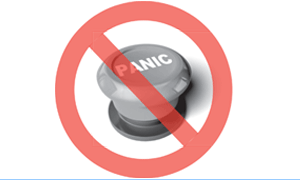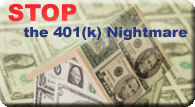
When the stock market slumps it’s not a setback, it’s simply a “bad stock day”
The stock market swoon of Oct. 19, 1987, was the largest one-day slump in history, causing millions of investors to stampede out of the market and stay out. However, a mere two years later the S&P 500 turned in a whopping annual return of more than 30%—one of only 12 calendar years since 1926 when the market performed that well.
Have investors learned anything in a couple of decades?
Nearly 20 years after the 1987 slump, on hearing bad stock market news in March 2007 thousands of 401(k) investors moved half a billion dollars out of stock mutual funds into fixed-income funds. Unfortunately, two scant months later the S&P 500 closed above 1500 for the first time in more than six years, the longest run of bullishness since 1944. A mere five months later a slump in the “sub-prime” home mortgage market sent millions of investors to the exits, although we don’t know how many of these were 401(k) investors.
Unfortunately, too few investors are getting the right advice, which is that the only way to build investment wealth is to buy and hold your investments—stay the course. Why is it self-destructive to head for the exits during a market slump? Because the market isn’t falling apart, its shares are temporarily dropping in value. If you react by selling your shares in a downturn and then wait for an upturn to invest again, you’ll end up paying top dollar for your shares and buying fewer of them. If, on the other hand, you stay invested, you’ll wind up buying more “bargain-basement-priced” shares that will eventually rise in value, boosting your nest egg.
If you sell, others will “profit” from your losses. Some of the biggest stock market booms during the last eight decades have occurred right after the so-called busts. In the 12 calendar years since 1926 that the stock market has produced better than 30% annual returns; five of these bullish years followed a year of negative returns—most likely because the savvy bargain-hunters bought cheap stocks dumped by not-so-savvy investors, causing the share prices to swoon.
It’s Not Timing the Market,
It’s Time IN the Market
The funny thing about the stock market is not only that it’s impossible to predict when it’s going to be up, but many of the eye-popping double-digit returns happen during a tiny percentage of the time. Here are some mind-boggling statistics—rarely publicized—about the potentially devastating cost to your nest egg of believing that you can escape downdrafts and anticipate updrafts:
Investors who missed the 30 best days out of the 3,650 days in the decade 1994-2004 would have lost .39% a year instead of gaining 12.09% a year. Go out even further and the stats are even more mind-boggling: investors who missed the best 90 days out of the 10,950 days in the 30-year period from 1963 to 1993 would have lost 95% of the market gains.
Change your investment strategy as your “time horizon” changes, not when the market does. Does ignoring market slumps mean that you should never change your 401(k) investment strategy? No—but your decision to change your investment choices should be driven by how close or far away you are to retirement and not yesterday’s or today’s news. Specifically, while younger 401(k) investors in their 20s and 30s should have a higher concentration in stock funds—80% to 100%—that concentration should shrink as investors hit their 40s and 50s, shifting to bond mutual funds or money market funds. One of the no-brainer ways to accomplish this shift is to move your 401(k) investments into a target fund (if your employer’s plan offers one), which does the shifting automatically
Bad Stock Market News Is No News: Bottom line: the next time you hear about bad stock market news on TV, don’t push the panic button—push the “off” button on your remote control. Your nest egg will thank you for not acting on impulse—and therefore acting in your best investment interests.
Please consult our Terms Of Use page before considering any of this advice.


